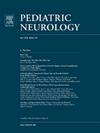Clinical Characteristics and Prognostic Factors of Anti-GM1 Antibody-Positive Guillain-Barré Syndrome Spectrum Disorders in Children
IF 3.2
3区 医学
Q2 CLINICAL NEUROLOGY
引用次数: 0
Abstract
Background
The study aimed to analyze the clinical features and risk factors for poor prognosis of Guillain-Barré syndrome (GBS) spectrum disorders in children positive for anti-tetrahexose monosialoganglioside (GM1) antibody.
Methods
We collected data for children with anti-GM1 antibody-positive GBS spectrum disorders in Affiliated Children's Hospital of Chongqing Medical University between July 2018 and March 2024; 1:1 matching was performed for combined anti-ganglioside or anti-sulfatide antibody. The patients underwent comparative clinical characterization to determine the antibody phenotype-clinical phenotype and to analyze the possible risk factors for the poor prognosis of the disorders.
Results
Thirty-seven pediatric patients were recruited. Anti-GM1 antibody-positive GBS spectrum disorders were preceded by a prodromal event (25 of 37, 67.6%). The first symptom was mainly limb weakness (20 of 37, 54.1%), which could be predominately accompanied by autonomic nerve involvement (21 of 37, 56.8%). Seven features showed statistically significant differences (P < 0.05) between the positive group and the negative one, including cranial nerve involvement, bulbar palsy, low lower limb muscle strength at discharge, axonal type of electrophysiological typing, and clinical typing of acute motor axonal neuropathy. The GBS disability scores at discharge and at one month after discharge were higher than those in the control group. The shorter time to peak (<7.5 days) was identified as an independent risk factor for poor short-term prognosis of the disorders.
Conclusions
Anti-GM1 antibody-positive GBS spectrum disorders have a relatively specific antibody phenotype-clinical phenotype. The shorter time to peak (<7.5 days) is an independent risk factor for poor short-term prognosis of the disorders in children.
儿童抗gm1抗体阳性格林-巴勒综合征谱系障碍的临床特点及预后因素分析
本研究旨在分析抗四己糖单唾液脂苷(GM1)抗体阳性的儿童格林-巴勒综合征(GBS)谱系障碍的临床特点及不良预后的危险因素。方法收集2018年7月至2024年3月重庆医科大学附属儿童医院抗gm1抗体阳性的GBS谱系障碍患儿的资料;联合抗神经节苷脂或抗硫脂抗体进行1:1匹配。对患者进行对比临床表征,确定抗体表型-临床表型,分析疾病预后不良的可能危险因素。结果纳入37例儿科患者。抗gm1抗体阳性的GBS谱系障碍发生前有前驱事件(37人中有25人,67.6%)。首发症状以肢体无力为主(20 / 37,54.1%),以自主神经受累为主(21 / 37,56.8%)。7个特征差异有统计学意义(P <;0.05),包括脑神经受累、球性麻痹、下肢放电时肌力低、电生理分型轴突类型、急性运动轴突神经病变临床分型。出院时及出院后1个月GBS失能评分均高于对照组。较短的峰值时间(7.5天)被确定为疾病短期预后不良的独立危险因素。结论抗gm1抗体阳性的GBS谱系障碍具有相对特异性的抗体表型-临床表型。发病时间较短(7.5天)是患儿短期预后不良的独立危险因素。
本文章由计算机程序翻译,如有差异,请以英文原文为准。
求助全文
约1分钟内获得全文
求助全文
来源期刊

Pediatric neurology
医学-临床神经学
CiteScore
4.80
自引率
2.60%
发文量
176
审稿时长
78 days
期刊介绍:
Pediatric Neurology publishes timely peer-reviewed clinical and research articles covering all aspects of the developing nervous system.
Pediatric Neurology features up-to-the-minute publication of the latest advances in the diagnosis, management, and treatment of pediatric neurologic disorders. The journal''s editor, E. Steve Roach, in conjunction with the team of Associate Editors, heads an internationally recognized editorial board, ensuring the most authoritative and extensive coverage of the field. Among the topics covered are: epilepsy, mitochondrial diseases, congenital malformations, chromosomopathies, peripheral neuropathies, perinatal and childhood stroke, cerebral palsy, as well as other diseases affecting the developing nervous system.
 求助内容:
求助内容: 应助结果提醒方式:
应助结果提醒方式:


